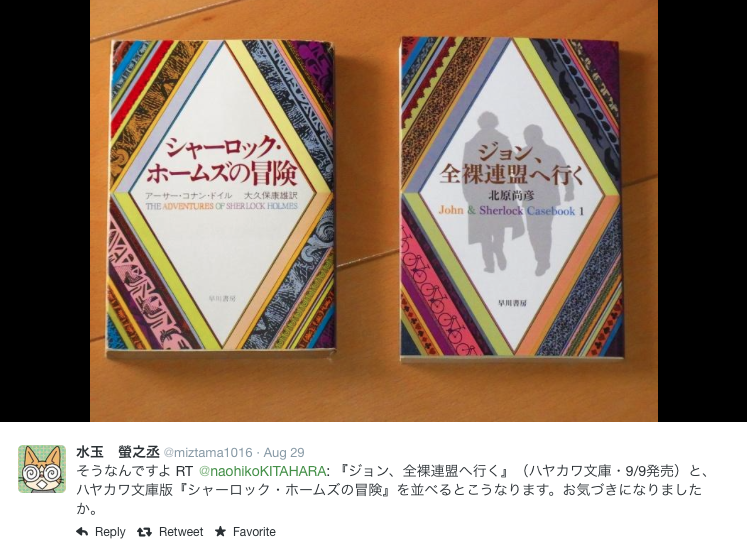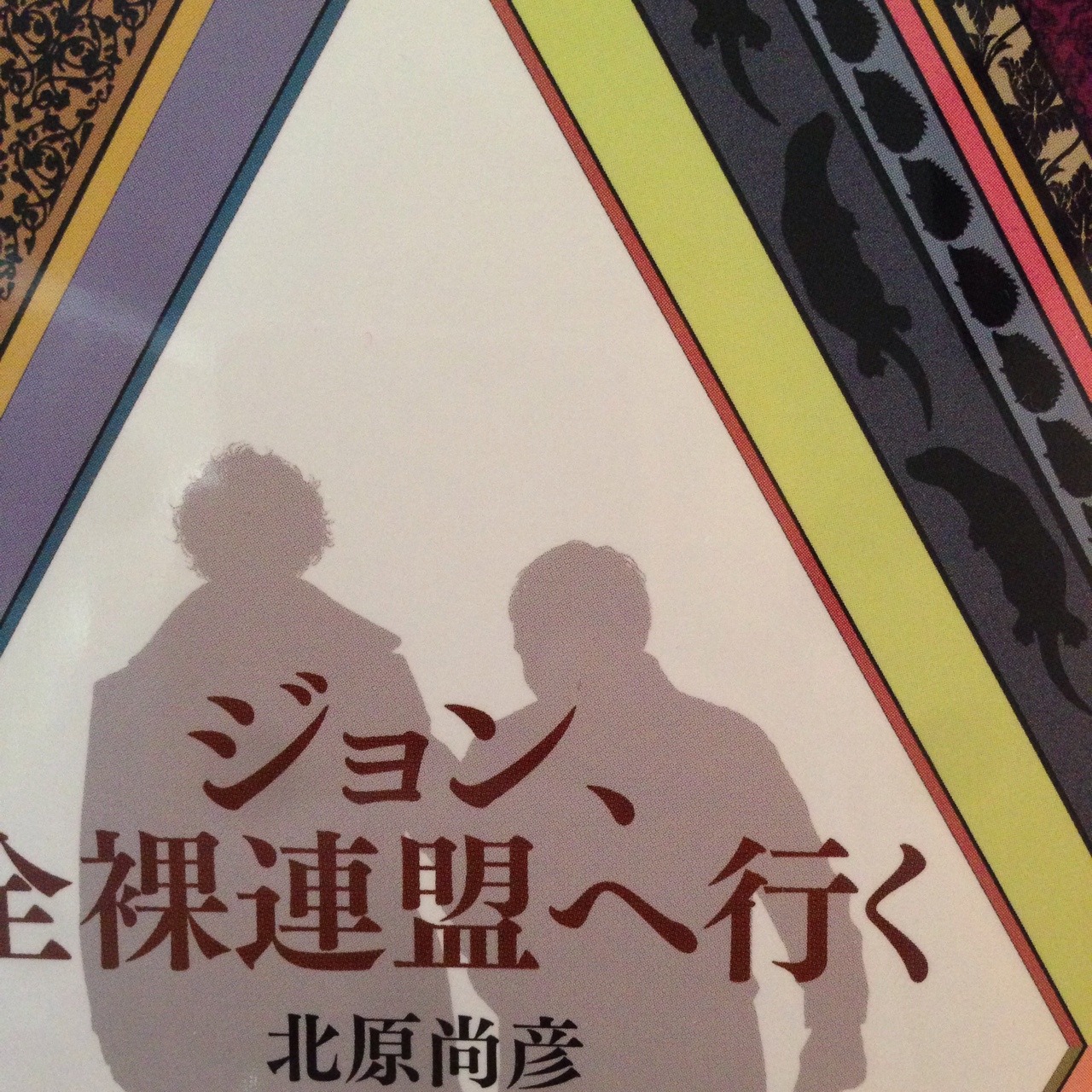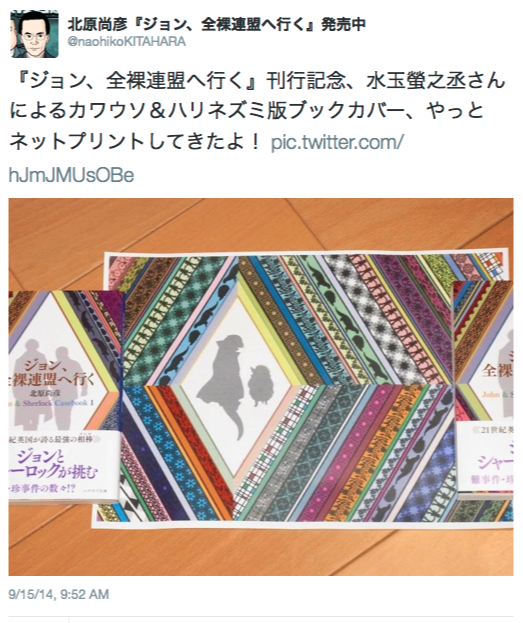1. Introduction
[1.1]In 1958, American Sherlock Holmes aficionado Edgar W. Smith wrote, "There is no Sherlockian worthy of his salt who has not, at least once in his life, taken Dr. Watson's pen in hand and given himself to the production of a veritable adventure" (quoted in Watt and Green 2003, 4). Not confined to the English-language sphere, such writing has been a global phenomenon since the earliest days of Sherlock Holmes fandom, prompting Japanese Holmes expert Kitahara Naohiko (note 1) to observe, "What definitively sets Holmes stories apart from other mystery novels is that they boast a vast number of high quality 'derivative works' (niji sōsaku)" (2013, 131). Since the first recorded Holmes pastiche, published in 1893 (Watt and Green 2003, 1), these works have spanned a diversity of genres—adaptation, parody, pastiche, fan fiction—and media—books, films, television, theater, comics, and even video games—blurring the distinction between canon and fan works that English-language fan studies has used to define media fandom. Moreover, the creators of such works are often also fans, blurring as well what is often perceived as a firm (if weakening) line separating fans and producers.
[1.2]Roberta Pearson has remarked on the traditional Sherlockian tendency to avoid the label "fan" in favor of "'admirer,' 'enthusiast,' 'devotee,' 'aficionado'—[terms that] disassociate them from the excessive affect and hormone-induced behavior connoted by fan" (2007, 107). Given this, Matt Hills notes, "it seems reasonable to assume that 'fandom' would, at the very least, be a contested identity within Sherlockian culture" (2012, 34). Both Pearson and Hills discuss at length the cultural and gender hierarchies that separate "fan" from other, less obviously affective (and thus preferred) relationships to Sherlock Holmes; yet this border policing goes both ways. The online fans—mostly women—who read and write transformative fan fiction, those whom the Sherlockians would hold at arm's length, form their own communities, and they "can police these worlds and their boundaries with tremendous vigilance" (Jamison 2013, 20). They do so particularly where the line between gift and cash economies blurs; a troubled boundary similarly inflecting English-language fan fiction scholarship that assumes that transformative fandoms are nonprofit and open access, and are therefore distanced from commercial publishing. But this assumption is challenged not only by fan fiction that makes its way out of online fan culture and into mainstream bookstores and movie theaters, but also in the intensifying transnational mélange of fan cultures whose norms often clash. It is increasingly unable to account not only for changes in Anglo-American fan fiction writing cultures, but also for differences between those cultures and non-Western ones. Such differences go back over a century and continue to affect non-Western fan production today.
[1.3]Kitahara Naohiko's 2014 BBC Sherlock pastiche collection, John and Sherlock Casebook 1: Jon, zenchi renmei e iku (The stark naked league), offers compelling examples of such work. Written, like countless other Holmes pastiches, in the first-person voice of John Watson, the six stories contained in this volume (note 2) center not on the characters of Conan Doyle's canon, but on the John and Sherlock of Sherlock, Steven Moffat and Mark Gatiss's modern adaptation for the BBC—characters that, in an Anglo-American context, fall strictly in the purview of fan fiction authors. Indeed, I am a reader and writer of Sherlock fan fiction myself, and the idea of commercially published BBC Sherlock pastiche was so anathema to my understanding of fan fiction that I scoured the book for evidence that it had been published with the BBC's permission; it comes in the afterword, where Kitahara writes, "I had written Sherlock-inspired modern Holmes pastiche before this for [Hayakawa] Mystery Magazine; this time, the editorial division contacted BBC Japan to ask if it would be "alright to publish such work, to which they received a quick OK" (2014, 279).
[1.4]Kitahara has written not only a plethora of commercially published Holmes pastiche, in both Japanese and English, but also original science fiction and mystery novels, and he has translated non-Holmes works by Conan Doyle and Alan Dean Foster's novelization of the 2009 Star Trek reboot. He is unquestionably a commercial author, earning professional income on the Holmesian writings he sells to such mainstream publishing houses as Hayakawa, Kodansha, and Kadokawa. This makes it difficult to talk about his Holmes pastiches as fan fiction, although that is what they are, just as much as anything I—or other, better writers in the fan community—have produced. Yet, while Kitahara's book blurs the line separating fandom and commercial media production, in ways that I will discuss in detail below, it also is the logical successor to over a century's worth of Japanese Holmesian writing that began in a more muddied subjectivity than did such writing in the West.
2.The blurred boundaries of Japanese Holmes writing
[2.1]Sherlock Holmes was introduced to Japan in the 1894 translation of "The Man with the Twisted Lip" (1891), which was reworked into literary critic Yasunari Sadao's "Kasuga dōrō" (The stone lantern) in 1912. Far from an example of straightforward transmission from Conan Doyle to Yasunari, the story in fact made its way to Yasunari by way of Maurice Leblanc's 1907 adaptation of "The Man with the Twisted Lip" entitled "The Jewish Lamp," in which he pitted Holmes against a character in his own work, the gentleman thief Arsène Lupin (Kitahara 2013, 132). In other words, Japanese Holmesian writing began with the blurred figure of a man who was simultaneously a fan, a professional writer, and a literary critic. And because early 20th-century Japan valorized English-language culture, his work largely bypassed the careful distinctions of taste that set Anglo-American Sherlockian connoisseurship apart from less elevated popular cultural consumption. In Japan and Sherlock Holmes, published by the Baker Street Irregulars, Masamichi Higurashi somewhat derisively notes that, prior to World War II, "the Canon was introduced as a collection of British literature or merely as early detective stories" (2004, 4); yet I would argue that it was precisely because Holmes entered into Japanese popular consciousness via broader explorations of English literature that Holmes-centered writing in Japan today enjoys singularly wide dissemination outside the strict confines of Sherlockian societies.
[2.2] Indeed, references and allusions to Holmes and his creator litter the modern Japanese literary landscape. Not only was Holmes the inspiration for mystery writer Edogawa Rampo's own detective, Akechi Kogoro (note 3) , but he makes parenthetical appearances in works by such luminaries of Japanese literature as Tanizaki Jun'ichiro, who mentions Holmesian deduction in his novel Gin to kin (Gold and silver, 1918) and his short story "Hakuchū kigo" (Devilish words at high noon, 1918) (Hirayama and Hall 2013, 143), and Akutagawa Ryūnosuke, author of Rashōmon, who discussed Holmes and Conan Doyle's prose in three critical essays on writing as well as in personal correspondence (Ueda 2015, 113). Rather than isolating Holmes (and thus his connoisseurs) as unique in English literature, these authors normalized him in such a way that Japanese Holmes fandom followed suit.
[2.3] This is perhaps nowhere better exemplified than in the autobiographical writings of Mori Mari, daughter of famed novelist Mori Ōgai. Throughout her memoir, Watashi no bi no sekai (My world of beauty, 1968), Mori reads everyday moments through a Holmesian lens, talking about her attempts at poaching an egg through a recollection of the poached eggs of breakfasts at 221B Baker Street (Ueda 2015, 192) and later reminiscing about the various foods that have appeared in books and films she loves: "The roast chicken of Jean Gabin's films. The grog and muffins piled on the country kitchen tables of Hitchcock's films. Sherlock Holmes's cold duck dinners" (quoted in Ueda 2015, 193). In Mori's writings, Holmes is part of the broad popular cultural repertoire that informs her daily comings and goings, almost independently of his role as a famous detective, leading her to claim in a 1976 essay on Holmes, "Of all [his] many fans, I think I'm the biggest fan [fuan] of all" (quoted in Ueda 2015, 199). Mori's use of the word "fan" here is telling. In Japanese it signifies both the kind of fannish passion associated with the word in the English-speaking world (with which meaning it appears in such borrowed terms as fuankurabu, "fan club," and fuanrettā , "fan mail"), and a fannish passion that is specifically focused on non-Japanese objects.
[2.4] Mori's fannishness is echoed in contemporary essayist Arashiyama Kosaburō's 2008 collection, Kaimono ryokōki (A memoir of my shopping travel), in which he records a trip to the Sherlock Holmes Museum, where he bought "a Sherlock Holmes hat," that is, a deerstalker cap, at the museum shop. Along with the deerstalker, Arashiyama received a facsimile of Sherlock Holmes's calling card from the shopkeeper, about which he reminisces poetically, "When I held the calling card in my hand / it deepened my belief that / 'Sherlock Holmes was a real man,' giving me a real feeling of pleasure" (quoted in Ueda 2015, 305).
[2.5] These examples of Holmesian influence are described in detail in Ueda Hirotaka's Bunjin, Shārokku o aisu (Writers love Holmes, 2015), alongside accounts of some 25 other Japanese writers whose works have touched on Holmes, making the book a uniquely comprehensive survey of the character's influence on Japan. Ueda is a more recognizably traditional Sherlockian, belonging to both the Japan Sherlock Holmes Club and the British Baker Street Irregulars (BSI), and he has written two other books on Holmes, Shārokku Hōmuzu dai hakurankai (Sherlock Holmes: The great exposition, 1988), and Shārokku Hōmuzu tabitabigakugaku: Shārokkiana etsurakki (Musings on Sherlock Holmes: The joys of Sherlockiana, 2001), as well as coediting and contributing to the BSI publication Japan and Sherlock Holmes (2004). In Bunjin, his objective history, like Mori's and Arashiyama's reminiscences, is colored by a particularly fannish subjectivity, as when he good-naturedly quibbles with Mori over her memory of facts. Of her poached egg anecdote, he observes, "It seems impressive that she remembers this, but reading 'The Problem of Thor Bridge,' it says that they ate 'hard-boiled eggs' for breakfast, not poached" (192), and of her cold duck one, "But Holmes didn't eat 'cold duck.' Snipe, pheasant, and cold beef appear in the Canon, but cold duck doesn't" (193). Such attention to the minutiae of Holmes canon echoes that of English-language Sherlockiana; it differs less in its content than in its mode of production, and this is where we might locate the specific cultural context that enables the publication of Kitagawa's BBC Sherlock pastiches.
[2.6] With few exceptions, English-language nonfiction about Sherlock Holmes and pastiches of him are the purview of two kinds of publishing: academic and small press. While pastiche by established authors often enjoys a somewhat more expanded market, it seems safe to say that Sherlockian publishing in both British and American markets is highly niche and mostly self-sustaining. In contrast, Japanese writing on Holmes, including both Kitahara's and Ueda's works as well as such nonfiction writing as Uemura Masao's Shārokku Hōmuzu no tanoshimikata (How to enjoy Sherlock Holmes, 2011) and Hiraga Saburō's Hōmuzu seichijunrei no tabi (Holmesian pilgrimages, 2010), is almost uniformly published by mainstream publishing houses and is sold both online and in large, urban bookstore chains. Kitahara alone publishes his Holmesian works through such Japanese publishing behemoths as Kadokawa (which also distributes BBC Sherlock on DVD and Blu-ray in Japan), Kodansha, and Suieisha, while Ueda's Bunjin was published by Seidosha, publisher of the well-regarded journals Eureka and Gendai shisō (Contemporary thought). This industrially pedigreed (and materially far-reaching) publication context accords Japanese Holmesian writing a mainstream legitimacy that it often lacks in the West—one that almost certainly benefits from the character's Britishness, since that has historically been valued in Japan. It's this legitimacy, I would argue, that combines with a comparatively blurred line separating fan and producer in Japan to create a fan and industrial context within which mass-marketed BBC Sherlock pastiche is made possible.
3. Fan works in the age of global convergence
[3.1] There are many different Japanese fan cultures, of course, and some are themselves more culturally legitimated than others. Yet even in the case of otaku and fujoshi fan cultures—the former roughly equivalent to American geek culture, and the latter to English-language slash communities—we see slippage between fan and producer subjectivities. Notable examples include the founders of the anime studio Gainax, who established themselves as anime producers with inexpensive, homemade animation that they premiered at anime fan conventions, and professional manga artists such as Fumi Yoshinaga, who supplements her own commercial works with amateur doujinshi (fan comics) that expand her stories, often in more homoerotic directions. This slippage is enabled at least in part by the geographical concentration of Japanese popular culture in Tokyo and Osaka, and it anticipates the blurring between fan and producer subjectivities we have only recently begun to see in Hollywood and the UK.
[3.2] Given this cultural context, it seems less surprising that a work that would be considered amateur fan fiction in Anglo-American fan culture was distributed in Japan by a well-known mainstream publisher; and if this were the extent of the differences separating these two fan cultural contexts, Kitagawa's book might be little more than a passing curiosity. What makes it something worth taking note of is its use, on its cover, of the otter and hedgehog meme that originated squarely within English-language online fandom. The cover of John and Sherlock Casebook 1: Jon, zenchi renmei e iku was designed by professional manga artist and illustrator Mizutama Keinojo (who died on December 15, 2014, shortly after the publication of Kitahara's book), who based it on the cover of Hayakawa's 1981 The Adventures of Sherlock Holmes, translated by Okubō Yasuo.

Figure 1. Mizutama Keinojo's August 29, 2014, tweet contrasting the cover of "The Adventures of Sherlock Holmes" (1981, left) with her 2014 homage cover for "John and Sherlock Casebook 1: Jon zenchi renmei e iku." [View larger image.]

Figure 2. Close-up of Mizutama's cover for "John and Sherlock Casebook 1: Jon zenchi renmei e iku," featuring the hedgehog and otter of (English-language) Sherlock fandom fame in the blue ribbons on the right. [View larger image.]
[3.3] Mizutama, who described herself as a fan of the BBC's Sherlock, was particularly taken with the otter and hedgehog meme, which originated in British fan Red Scharlach's Tumblr post "Otters Who Look Like Benedict Cumberbatch: A Visual Examination" (http://redscharlach.tumblr.com/post/19565284869/otters-who-look-like-benedict-cumberbatch-a). After publication of the book, Mizutama made a special version of her cover available to fans in Japan who, for 24 hours, could print it at networked 7-Eleven convenience stores for only the cost of making a color photocopy: 60 yen (note 4); both she and Kitahara publicized the offer on Twitter. In this version, the official cover's center silhouettes of Sherlock and John are replaced with the costumed silhouettes of an otter and a hedgehog, inextricably linking Mizutama's work with English-language fan works.

Figure 3. Author Kitahara Naohiko's tweet demonstrating that he downloaded and printed Mizutama Keinojo's limited fandom version of the "John and Sherlock Casebook 1: Jon, zenchi renmei e iku" cover, featuring an otter wearing Sherlock's distinctive Belstaff coat walking next to hedgehog John. [View larger image.]
[3.4] It's this last cover that I find all but impossible to discuss through those frameworks of oppositionality, appropriation, and clearly defined fan/producer relationships that currently characterize English-language scholarship of fan fiction and transformative works. Indeed, the decentralized context of the book's production—it was produced by the longtime publisher of both Conan Doyle's works in Japanese and the long-running Hayakawa Mystery Magazine, written by identifiably traditional Sherlockian Kitahara, and illustrated by a professional artist-cum-Sherlock fan—raises the questions of where we locate production and how we might conceptualize "monetization" here.
[3.5] Rather than an outlier, Mizutama's book cover seems a vanguard of things to come. Nele Noppe writes, "I question whether it makes sense for fans and fan scholars to focus debates about commodification on whether commodifying fan work is in any way desirable. It will most likely happen, in some form, at some point in the future" (2011, ¶5.1). That future, I would argue, has come, and now we need to shift debates about whether or not we should "allow" commingling (within both fandom and fan studies) of fans and producers to debates about how we might more effectively navigate these turbulent waters. This is not to say we should abandon issues of appropriation, which are particularly relevant within the far more structured American media industry. But Mizutama's hybrid identity as both fan and producer, set in a culturally specific context in which these identities have historically been blurred, suggests that we might expand our consideration of fan/producer relationships and the circulation of fan works outside fandom to include the ways that fannish authenticity and identities are being challenged by an always-changing technological landscape.
4. Notes
1. Japanese names are given in Japanese order (with the surname first) except where a Western precedent exists.
2. The stories appear under both Japanese and English titles: "Jon no suirihōshūgyō" (How John learned the trick), "Jon, zenchi renmei e iku" (The stark naked league), "Jon to jinsei no nejireta onna" (The woman with the twisted life), "Jon to bijin saikurisuto" (The shapely cyclist), "Jon, san kyōfukan e iku" (The three terribles), and "Jon to madara no nawa" (The speckled rope).
3. Edogawa Rampo was the pen name of author Hirai Tarō, styled after the name Edgar Allan Poe.
4. This was the same means by which Mizutama had distributed an earlier Sherlock doujinshi cowritten with fantasy novelist Yu Godai.